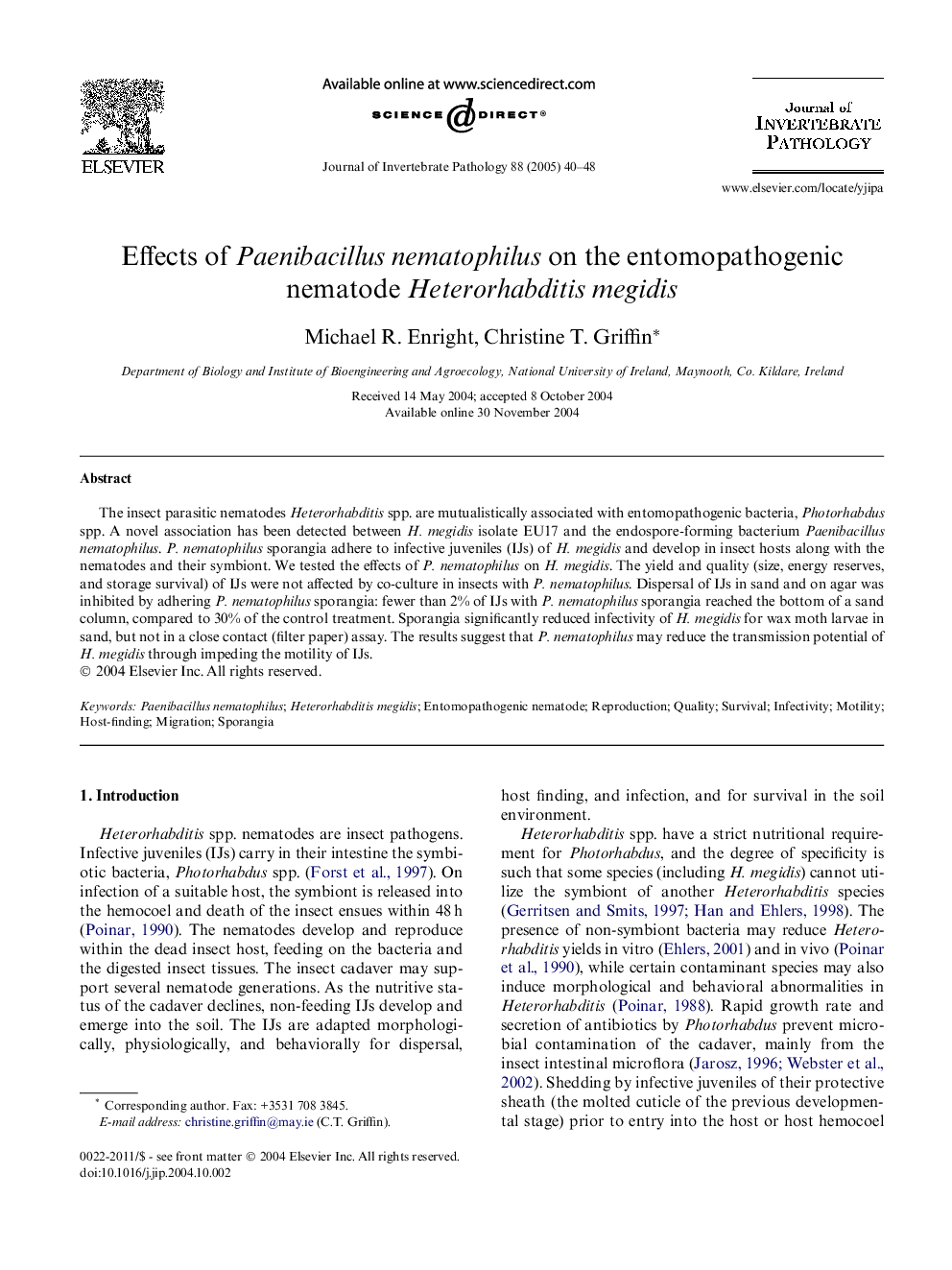| Article ID | Journal | Published Year | Pages | File Type |
|---|---|---|---|---|
| 9486656 | Journal of Invertebrate Pathology | 2005 | 9 Pages |
Abstract
The insect parasitic nematodes Heterorhabditis spp. are mutualistically associated with entomopathogenic bacteria, Photorhabdus spp. A novel association has been detected between H. megidis isolate EU17 and the endospore-forming bacterium Paenibacillus nematophilus. P. nematophilus sporangia adhere to infective juveniles (IJs) of H. megidis and develop in insect hosts along with the nematodes and their symbiont. We tested the effects of P. nematophilus on H. megidis. The yield and quality (size, energy reserves, and storage survival) of IJs were not affected by co-culture in insects with P. nematophilus. Dispersal of IJs in sand and on agar was inhibited by adhering P. nematophilus sporangia: fewer than 2% of IJs with P. nematophilus sporangia reached the bottom of a sand column, compared to 30% of the control treatment. Sporangia significantly reduced infectivity of H. megidis for wax moth larvae in sand, but not in a close contact (filter paper) assay. The results suggest that P. nematophilus may reduce the transmission potential of H. megidis through impeding the motility of IJs.
Keywords
Related Topics
Life Sciences
Agricultural and Biological Sciences
Ecology, Evolution, Behavior and Systematics
Authors
Michael R. Enright, Christine T. Griffin,
